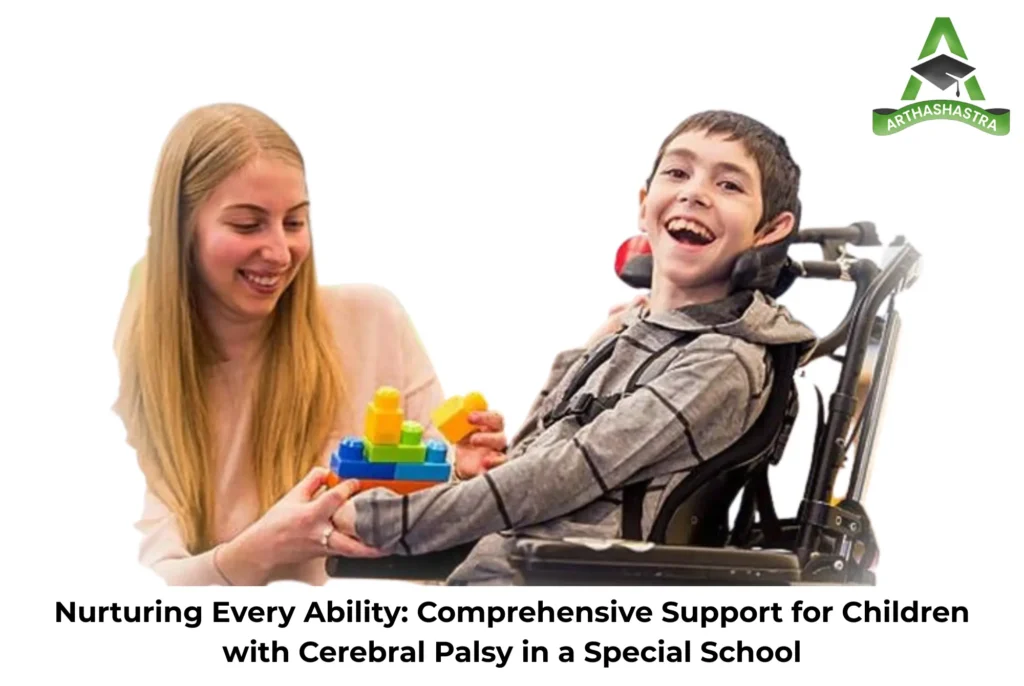For a child with Cerebral Palsy (CP), the journey of learning and growth is unique. Cerebral Palsy, a group of disorders affecting movement, muscle tone, and posture, presents a spectrum of challenges that require a specialized, multi-faceted approach to education and well-being. Arthashastra special school provides a nurturing ecosystem where these children are not defined by their limitations but are empowered by their potential. Through an integrated framework of therapies and individualized education, these institutions focus on holistic development, ensuring every child can thrive.
The Integrated Therapeutic Model: A Collaborative Circle of Care
The cornerstone of support for a child with CP in a special school is the seamless integration of therapeutic services into their daily routine. This isn’t about pulling a child out for isolated appointments; it’s about weaving therapy into every aspect of their learning and play. A dedicated team of specialists collaborates to create a comprehensive support plan.
Physiotherapy (PT): Building the Foundation for Movement
Physiotherapy is fundamental in managing the motor impairments associated with CP. The primary goals are to enhance mobility, improve posture and balance, and prevent secondary complications like muscle contractures.
Personalized Exercise Programs: Therapists design routines to stretch tight muscles, strengthen weaker ones, and improve coordination.
Gait Training and Mobility: Using supportive equipment like walkers or gait trainers, children practice walking in a safe, supervised environment.
Adaptive Equipment: PTs assess and recommend orthotics (braces), wheelchairs, and standing frames that provide proper support and alignment, enabling greater participation in classroom activities.
Occupational Therapy (OT): Fostering Independence in Daily Life
Occupational Therapy focuses on enabling the child to perform “occupations” or activities of daily living (ADLs) as independently as possible.
Fine Motor Skills: OTs use engaging activities to develop hand-eye coordination and the dexterity needed for writing, buttoning a shirt, or using a computer.
Self-Care Skills: They break down tasks like eating, dressing, and grooming into manageable steps, often introducing adaptive tools like specialized utensils or button hooks.
Sensory Integration: Many children with CP have sensory processing challenges. OTs create sensory diets and use tools like weighted blankets or therapy swings to help children regulate their sensory systems, improving focus and calm.
Speech-Language Pathology (SLP): Giving Every Child a Voice
Communication and feeding can be significant challenges for children with CP due to impaired muscle control in the face, throat, and mouth.
Articulation and Language Development: Therapists work on strengthening oral muscles to improve speech clarity and help children build their vocabulary and sentence structure.
Augmentative and Alternative Communication (AAC): For children with limited verbal ability, SLPs introduce AAC systems. These can range from simple picture exchange boards (PECS) to high-tech speech-generating devices, ensuring every child can express their thoughts and needs.
Swallowing and Feeding Therapy: SLPs provide crucial support for dysphagia (difficulty swallowing), teaching safe swallowing techniques and recommending appropriate food textures to ensure proper nutrition and safety.
Special Education: An Accessible and Empowering Learning Environment
Academics in a special school are tailored to each child’s unique cognitive and physical abilities, ensuring that learning is an empowering, not frustrating, experience.
Individualized Education Plan (IEP)
Every child has an IEP, a meticulously crafted document developed in collaboration with therapists, teachers, and parents. This plan outlines specific, measurable goals in all areas—academic, physical, social, and functional—and the strategies that will be used to achieve them.
Adaptive and Assistive Technology
The classroom is an inclusive space, equipped with technology to bridge physical gaps:
Modified Furniture: Adjustable desks and supportive seating ensure proper posture and comfort.
Assistive Technology for Learning: This includes computers with adaptive keyboards, eye-gaze technology, and specialized software that allows children with physical limitations to write, research, and participate fully in lessons.
Holistic Wellness: Nurturing the Mind and Spirit
True wellness goes beyond therapy and academics. A special school nurtures the child’s emotional and social well-being, fostering a sense of belonging and self-worth.
Behavioral and Psychological Support: Counselors help children build self-esteem, develop coping strategies for frustration, and navigate social interactions, creating a positive and supportive emotional foundation.
Art, Music and Outdoor Activities: These enrichment activities offer powerful therapeutic benefits. Art and music provide non-verbal outlets for expression, while the buoyancy sand pit and sensory garden allows for freedom of movement that may be difficult on land.
Social Skills Development: The school environment is a safe space to practice social skills. Through structured group activities and unstructured play, children learn to build friendships, share, and collaborate with peers who understand their journey.
Conclusion:
Arthashastra school provides a child with Cerebral Palsy with more than just an education. It offers a comprehensive, compassionate, and collaborative community dedicated to unlocking their full potential. By addressing their physical, academic, social, and emotional needs in an integrated way, it equips them with the skills and confidence to lead a rich and fulfilling life.


